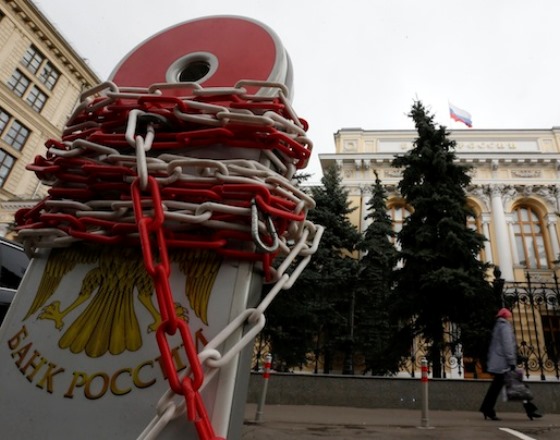
The Russian Central Bank's plan to buy foreign currency to build up its reserves has moved the ruble back toward levels assumed by the country's largest exporters after a spike in its value earlier this year.
Russia is the world's second-largest oil exporter and a major player in gas, steel and diamonds, all of which are traded mainly in dollars. A weaker currency therefore boosts companies' earnings in ruble terms.
After strengthening to less than 49 per dollar in mid-May, the ruble has lost over 7 percent since the Central Bank announced last month it would start buying up to $200 million a day to replenish its foreign exchange reserves.
It is currently trading at around 55 per dollar, around 40 percent weaker than a year ago after plunging in tandem with oil prices in late 2014. That is in line with forecasts for 2015 by major companies such as LUKoil and Norilsk Nickel.
"The Central Bank's forex purchases sent an important signal to the market that the ruble's strengthening speed at the time was too high," Sberbank CIB analyst Iskander Abdullaev said. "Of course, a weaker ruble is more of benefit for companies and the economy now and next year."
The Central Bank says it wants to boost reserves to around $500 billion over the next few years from $361.6 billion now. It is also expected to cut interest rates by 100 basis points next week, which would weaken the currency further.
"A strong ruble is not beneficial for anyone," noted Alexander Kornilov, an analyst with Alfa Bank.
Gazprom Neft, Russia's fourth-biggest oil producer, expects the ruble to trade at 50-65 per dollar this year but is changing its forecast by the month, chief financial officer Alexei Yankevich said last week.
LUKoil, Russia's No. 2 oil producer, has calculated its 2015 investment program based on a ruble rate of 55 per dollar, according to a presentation on its website.
Nickel, copper and palladium producer Norilsk Nickel said recently it sees an average exchange rate of 54 per dollar in 2015-18, while a spokesman said cast iron exporter Koks Group expects a rate of 45-50 this year.
Oil and gas giants Rosneft and Gazprom, which owns Gazprom Neft, declined to comment on where they saw the currency heading.
LUKoil said in its first quarter results that operating costs had fallen almost 22 percent in dollar terms compared with the same period a year before while production costs in Russia were down 39 percent thanks to the weak ruble.
"The ruble's weakening … leads to lower spending in dollar terms and vice versa," the firm added.
Economic Benefits
Economic Development Minister Alexei Ulyukayev, who has said Russia's budget balances at an oil price of 3,600 rubles per barrel, said this week that ruble weakness was a long-term benefit for the economy.
"For a short period of time it created a lot of difficulties but for the long story it [a weak ruble] creates better conditions in terms of cost-to-income ratio," Ulyukayev told the BBC in an interview.
His ministry last month revised its FX forecast to an average of 60 rubles per dollar for 2015 and 56.8 for 2016.
Abdullaev and other Sberbank CIB analysts said in a note this week that the ruble had looked "fundamentally overvalued and unstable" when it spiked to 50 per dollar earlier this year as oil bounced from its lows.
"The current ruble devaluation looks like a 'normalization' of the situation in the [Russian] economy," they added.
original source: http://www.themoscowtimes.com/business/article/central-bank-reserves-policy-pushes-ruble-down/523510.html
